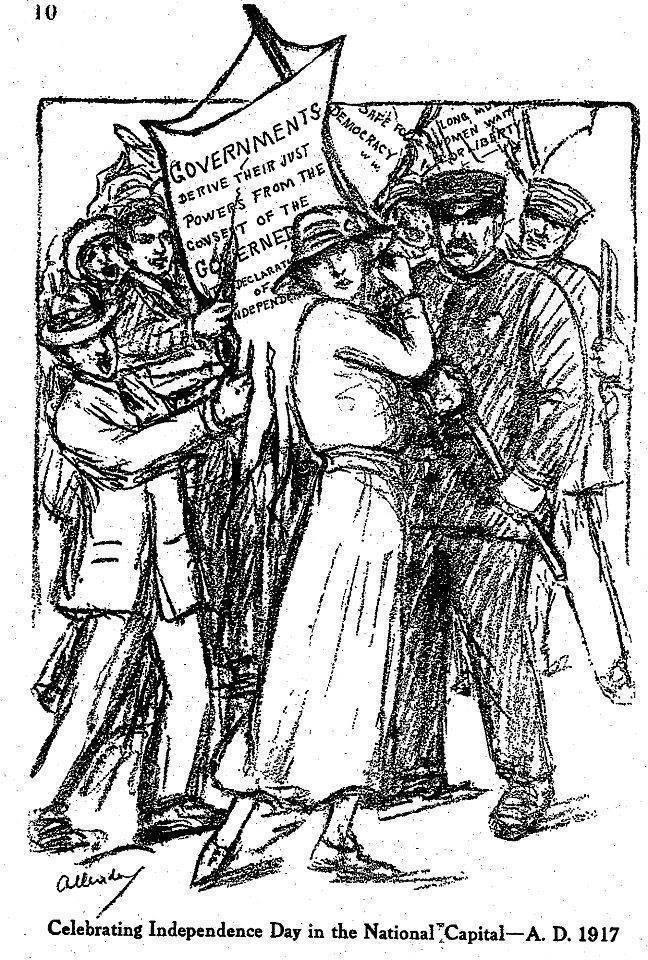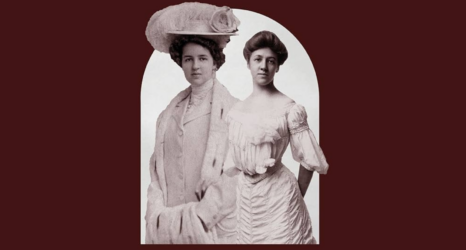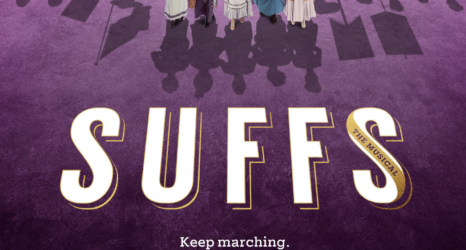
Today in Feminist History is our daily recap of the major milestones and minor advancements that shaped women’s history in the U.S.—from suffrage to Shirley Chisholm and beyond. These posts were written by, and are presented in homage to, our late staff historian and archivist, David Dismore.
July 6, 1917: Three days in jail.

That was the sentence Judge Mullowney reluctantly imposed today in Washington, D.C.’s Police Court on eleven of the suffragists who took part in a “Silent Sentinel” picketing of the White House on July 4th. They were given a choice of paying fines or going to jail, and all chose prison. The judge first offered to release them on personal bond if they would agree to stay away from the White House for about six months and “not bother the President” during these “abnormal times,” which began with our country’s entry into the war three months ago.
But none of those convicted on false charges of “blocking traffic” on the wide Pennsylvania Avenue sidewalk thought they were guilty of anything, nor were they willing to surrender their right of free speech. So after acknowledging that “I know it’s not going to make you quit marching in front of the White House,” and even volunteering to pay their fines, the judge said: “Well, it’s no use to ask you to make any promises. I know you won’t do it. So I’ll have to give you the same as I gave the others last week – $25 fine each or three days in jail.”
Then off to the District Jail they went.
Those serving time tonight for exercising their Constitutional right to peacefully protest outside the White House gates are: Lucy Burns, Dora Lewis, Gladys Greiner, Margaret F. Whittemore, Vida Milholland, Helena Hill Weed, Iris R. Calderhead, Frances B. Green, Elizabeth Stuyvesant, Joy Young and Lucille Shields.
Hazel Hunkins, who was not carrying a banner, but snatched one back from a member of the crowd who stole it, then returned it to the picket who had been carrying it, will get a separate trial. Kitty Marion, who was distributing copies of a suffrage publication to the crowd when she was assaulted by Charles Morgan, will be tried along with him tomorrow, both charged with “disorderly conduct.”
The Independence Day event began about noon, when the first six demonstrators – followed by approximately 2,000 spectators – marched out of the National Woman’s Party headquarters and toward the White House. Helena Hill Weed carried a banner reading: “Governments derive their just powers from the consent of the governed.” Since it was already public knowledge that the pickets would be there to defy a police ban on picketing along the White House fence, another large crowd had already gathered in that location to watch the confrontation.
Upon nearing the White House gates, a struggle between picketers and police ensued, and one by one, the National Woman’s Party’s purple, white and gold standards, and the “offensive” banner quoting the Declaration of Independence, came down amid the cheers of the crowd as arrests were made. A second assault on the objective was made outside the West gate shortly afterward by another contingent, with Joy Young holding up a banner asking: “Mr. President, what will you do for woman suffrage?” The earlier scene was repeated.
Regardless of consequences, National Woman’s Party pickets are determined to protest as often as necessary to bring President Wilson’s hypocrisy to public attention. He has vigorously and repeatedly crusaded in favor of democracy around the world, but refuses to support the Susan B. Anthony (woman suffrage) Amendment that would bring democracy to tens of millions of voteless American women in States where only men are now permitted to vote.
As the highest-ranking member of the Democratic Party, which controls the Congress, Wilson could certainly use his considerable influence to gain a few more Democratic votes, which combined with the overwhelming Republican support that already exists, would achieve the two-thirds majority of both House and Senate that’s needed to send the Anthony Amendment to the State legislatures for ratification by three-fourths (36 out of 48).
Of course, more conservative methods of achieving “Votes for Women” are endorsed by suffragists like Carrie Chapman Catt and organizations such as the National American Woman Suffrage Association. Their efforts clearly help our cause of equal suffrage as well, but some militant action is also vital to victory. So the courage and determination of Alice Paul’s “Silent Sentinels” should be praised, and their efforts supported until the Anthony Amendment, which bans discrimination at the polls on account of sex, is safely and permanently in the U.S. Constitution.





